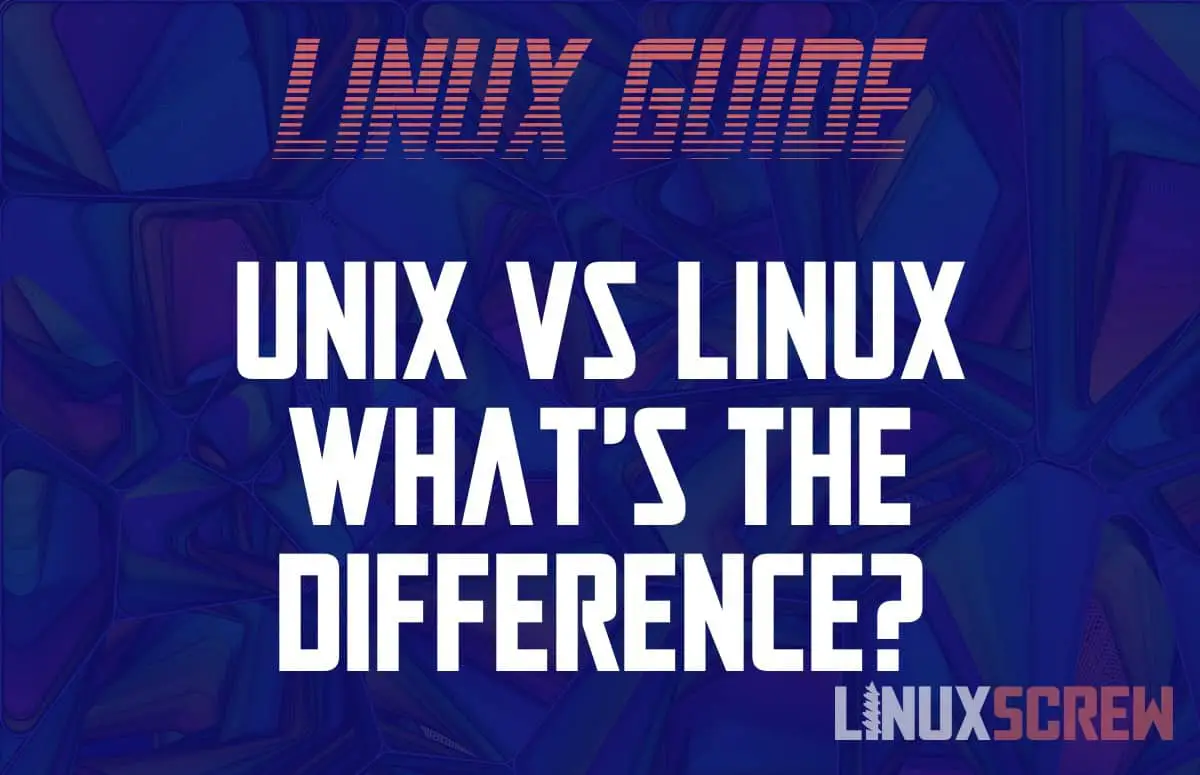Here’s a quick summary of Unix and Linux and what makes them different, and ways you can try them out.
Different products, similar uses
What is Unix?
Unix was developed in the 1970s by Bell Labs as an Operating System for developers. Over time features such as multitasking and support for multiple users were added, turning it into a versatile operating system popular with universities.
The modular development of Unix lead to the Unix Philosophy – an emphasis on modular, reusable code and handling files as text which other programs, among other tenets, can use.
Unix is also a Standard
Unix has now become a family of operating systems developed by various commercial entities, all of which adhere to the Single UNIX Specification (SUS). The SUS allows any developer to write their operating system to comply with the Unix specification, meaning that it can be advertised as being Unix compatible and use the associated Unix trademarks.
HP-UX, which runs on HP branded servers and workstations, and Apple’s macOS, which ships on all Apple desktop and laptop computers, are the most popular implementations of the Unix standard.
Most Unix operating systems are proprietary, commercial products that are not free.
Historically, there have been fees involved to access the specification, so very few free software projects have sought official certification with the standard.
What is Linux?
Linux was developed in the 1990s by Linus Torvalds as a free, open-source operating system with no restrictions.
Earlier, the GNU project began to provide a completely free, Unix-compatible software platform and tools.
Due to the freely available code for software from the GNU project, many of these tools were used in Linux. This, as well as a similar design philosophy and the OS’s modular nature, led to it being considered Unix-like.
Linux is now one of the most (if not the most) popular operating systems.
Linux is a POSIX compatible Operating System, and so is Unix
The Portable Operating System Interface (POSIX) is a set of standards for ensuring compatibility between operating systems. It was developed in the 1980s along with the GNU project to help ensure software being developed by different groups would be compatible with each other.
Unix is officially POSIX compliant, while Linux (and software based on Linux, like Android) are considered to be mostly POSIX compliant.
Same Same but Different
So, Linux and Unix share a lot of similarities, but they are not the same thing.
They share (or shared) similar design philosophies and have inspired features in each other as they have matured, but they are not the same thing.
They do, however, run a lot of the same software. macOS, a Unix-Certified operating system, will feature terminal commands which behave identically to their Linux brother – because they are the same program, just running on different platforms.
How To Try Out Linux
Just download it! Distrowatch is a great site with a list of the most popular Linux distributions. Most distributions have a quick start guide in their documentation to get you up and running, and some will even provide tools to run Linux in a virtual machine, so you don’t have to reformat your computer.
How To Try Out Unix
This one is a bit more difficult – Unix isn’t free to download in most cases. If you have an Apple Mac computer, you’re using a Unix-Certified operating system right now.

